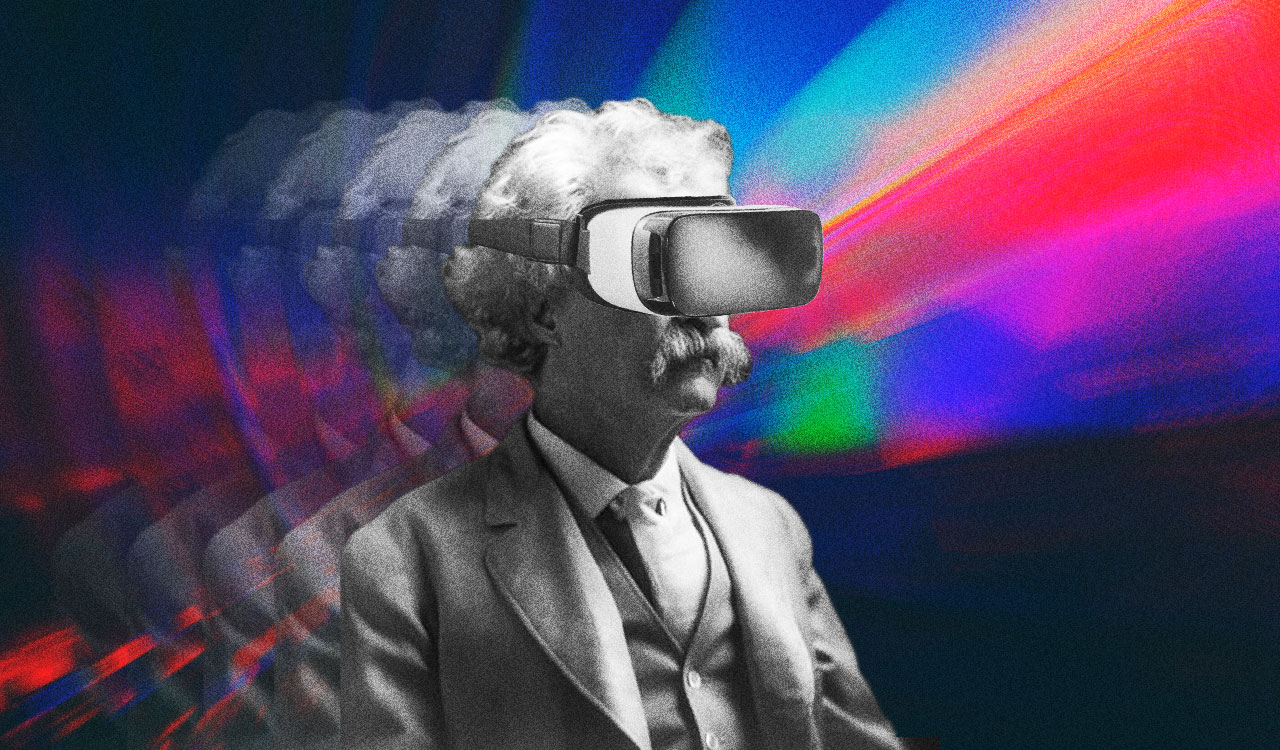Remember Mark Twain’s observation about the weather? Everybody talks about it, but nobody does anything about it. Brand growth in the metaverse is quite like that. Yes, just like weather, Web3 seems conceptually important, but chaotic and well beyond our control. However, unlike the weather, we can do something about tomorrow’s marketing climate. Today.
Are You Ready?
As in any iteration of Jeopardy, let’s state the issue in the form of a question: Are we really ready to shrug and say scores of smart sportswear, fashion, beauty, retailers, and CPG brands are simply woefully wrong about betting on the metaverse? Really? As in Nike, Adidas, Vans, LVMH, Kering, Maybelline, Sally Beauty, Home Depot? It’s easy enough to call out the recent tech setbacks as evidence of too much, too soon: the crypto meltdown and layoffs in big tech. You might caution that irrational exuberance strikes again with the next big shiny tech thing, the metaverse.
Web3 and everything it heralds — from the metaverse and NFTs to Generative A.I. and beyond – is poised to accelerate the evolutionary pace of retail excitement, product marketing and revenue creation, giving rise to a new era of brand communities without borders.
We see the future though a haze at first with some glimmers of the blurred outlines of the “silent haunches” he described. What are those metaphorical haunches? Think of those digitized Hermès bags selling in the metaverse for more than In Real Life (IRL) iterations. We heard of NFTs alchemy trick transmuting dross into gold for digital artists and soon enough for Bud Light. Unchecked, here comes “WendyVerse and WalmartLand.
The Metaverse Revealed
The siren call of the next cool thing may claim our brief attention, but the metaverse is here right now chock-a-block with tactics. Admittedly, many of those tactics are forged by techies ready to thrill and amaze to win their day (or at least 15 minutes) of fame. But trust me, the market will move on from the current fleeting cool hunt, rife with its FOMO anxiety and “throw it against the wall and see what sticks” fail-fast logic.
Get ready for the genuine exploration of the potential of the metaverse as we seek clarity, strategic intent, and cogent frameworks through which to forge a sustainable competitive advantage. We’re on the cusp of being able to actually do something, something strategic.
Web3 and everything it heralds — from the metaverse and NFTs to Generative A.I. and beyond – is poised to accelerate the evolutionary pace of retail excitement, product marketing and revenue creation, giving rise to a new era of brand communities without borders.
What Took So Long?
There are four reasons we should move our metaverse thinking beyond cocktail hour patter, Twitter feeds and off-site breakout sessions.
- For starters, the technology has become nearly ubiquitous: Every device everywhere all the time is connected, and those connections enable peer-to-peer, decentralized networks without Web2 third-party intermediaries (think Facebook) to monetize our behavior as data.
- The emergence of remarkable 3D graphics enabling “mini-me” and “modestly-better-than-me” identities as our avatar better selves.
- The concurrent emergence of viable Artificial Intelligence to make full use of natural language processing.
- The power of the blockchain as a decentralized and secure form of a public ledger.
These complex technologies have become part of our daily layperson vocabulary. In short, we are feeling the headwinds of a perfect storm of tech possibilities.
Riding the Wave
Yes, there are also threats from emerging technologies for brands and businesses. But if we look the other way, we do it at our own risk. If we avert our gaze, we ignore vibrant new sources of growth, for established brands and for innovative startups eager to claim their share of the $700+ billion tech pie before the end of the decade. That’s this decade.
What we’ve come to understand is that VR is exactly, precisely, definitively like IRL marketing in at least one key dimension: Mission Clarity is Mission Critical. Brand marketing is simply one of five relevant and intelligent goals to pursue. There’s also Revenue Creation, Employee Recruitment and Training, Footprint Expansion and Operational Efficiency
Success in virtual reality for the novices and habitués alike requires discipline. Yes, there are five possible objective benefits (above), but the task of savvy strategists is to choose one and master it. Of course, developing Revenue Creation or Employee Recruitment and Training approaches may well come to benefit Brand Marketing, but build the marketing framework first rigorously and accept that serendipity may naturally follow.
Branded Realities
Consider then Brand Marketing as the number-one choice for the metaverse. Use some critical thinking to identify how to brand in a parallel world. Perhaps the foremost goal is to down-age a brand’s audience or ratify a youthful segment’s existing brand passion. For sure, young people are the indigenous population of the metaverse. For now.
Maybe it’s to reinvigorate the brand community’s declining level of excitement or enhance customer loyalty across channels. Or, to break the brand’s addiction to the intoxication of price promotion. Consider for a moment the margin available in sales of a virtual product vs its conventional IRL version. Alternatively, perhaps the goal is to improve the consumer journey wherever she experiences the brand, IRL or VR. In any case, here comes augmented reality at warp speed.
A Guide to Crossing the Threshold
- It is crucial to know what we hope to find when we consider opening a portal to enter a virtual world. But first, we have to figure out which portal. Viable platforms abound: Animal Crossing, Roblox, Fortnight, Decentraland, Sandbox, RecRoom and the list goes on.
- As with any visit to a new market, learning the language, the cultural norms, and social behaviors in a co-created metaverse community is as respectful and essential as it is IRL. Who would expand a brand to a new IRL country without first learning the lingua franca? The platforms can seem to be a series of interchangeable – and to the C-suite types which must fund the endeavor, goofily named – parts. But the mores, rites and rights of each platform diverge.
- Next comes a series of questions about how to engage and how to create this form of brand expansion. Create a world, sponsor someone else’s world, do episodic events, launch NFTs? It’s much easier to decide once we know why we are playing in the metaverse and where to engage.
- With the objective and strategies clearly top of mind, developing tactical KPIS and even ROIs in the evolving world of Web3 comes into focus with profound clarity. How many visits, how long do they stay, do they come back, is there IRL:VR:IRL circularity, what’s the impact on brand engagement and loyalty? What may seem amorphous and strange at first becomes clear, relevant, and business building.
- Strategic development is best considered at brand and cultural pivot points. Those are dots on the horizon where consumer behaviors intersect with a brand’s core competencies and organizational will. Web3 is one such crossroad.
Timing Out
Now’s the time to do something about the metaverse. That something is beyond talking. That something is strategic. It seems relatively simple to contemplate the requisite cool factor tactics which might work to wedge a brand into this future. We have agencies and tech experts to chart the “this would be so cool” factor.
It is demonstrably more challenging to craft a coherent long-term strategy to leverage the audacious potential of Web3 to achieve competitive, margin-accretive, sustainable growth. That’s the real potential, as Web2 intermediated control succumbs to Web3 co-creation. If you haven’t developed a strategy, you may be close to timing out. The metaverse is real and it cannot be ignored if you want to be in the game along with all your competitors. This puts it in perspective: If the American Dream developers were considering this site today, they\’d skip it and build in the metaverse where they wouldn\’t have to deal with New Jersey blue laws on apparel sales, and all the mishigas of making sure the rides are rolling all day long.




